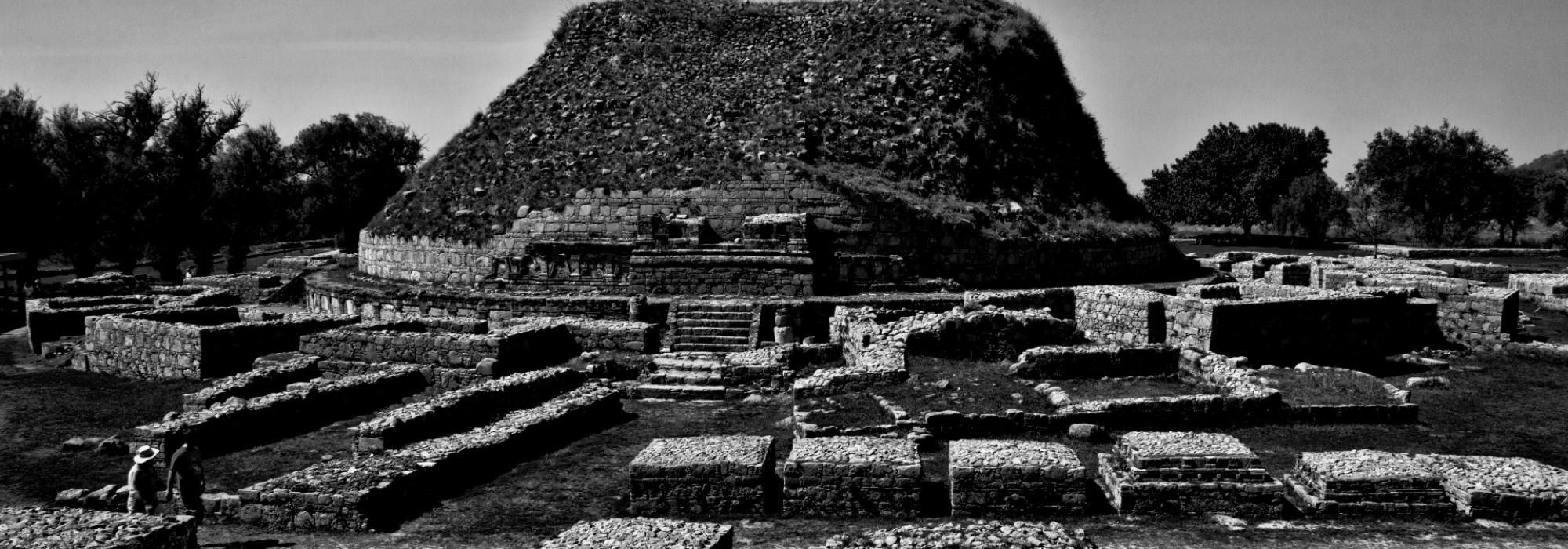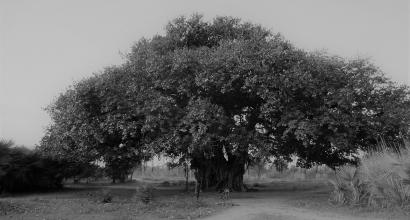There was a certain amount of misrule and evil during the reign of the Nandas. A powerful force awoke that would destroy all that evil from the past. That was Chandragupta Maurya. What we know from our written history – and commonly agreed upon – is that Chandragupta was a great example for the brilliance of kshaatra. There are many accounts of this in Jaina, Bauddha, and Hindu – Sanatana Dharmic – literature. According to some accounts, there was a king named Sarvarthasiddha, who had a son called Maurya, whose son was Chandragupta; there are even stories that Maurya had a hundred sons. But these are hard to believe. In this matter, some of the Buddhist accounts appear to be closer to the truth. According to those, he belonged to the Mayuraka clan (‘Moria’ is the Prakrit version) and was a son of the king of Pippalavana. The word ‘maurya’ is just a Sanskritization of the Prakrit word. In its original form it is ‘Mayuraka.’ Every royal lineage had an animal or a bird as their symbol and the kingdom of Pippalavana had Mayura – the peacock – as their royal insignia.
[contextly_sidebar id="0icM0rh64JS1qbv3d7nysN26FNebtgdV"]An interesting point of observation here is the origin of the Sanskrit word ‘maurya.’ There are stories that King Sarvarthasiddha had two wives – the elder one was Sunanda, the mother of the nine Nandas and the younger one was Mura, the mother of Maurya. One of Maurya’s sons was Chandragupta. But Sanskrit grammar doesn’t allow for a derivation of Maurya from Mura. मुरायाः अपत्यं पुमान् मौरिः / मौरः / मौरेयः – Mauri, Maura, and Maureya are legitimate forms but not Maurya. So where did ‘maurya’ come from? In Sanskrit, the masculine gender form of 'Mura' can be Maura or Maurya but noun form conveying the meaning 'the son of Mura' will not be 'Maurya.' Therefore we must come to the conclusion that it comes from the Mayuraka people, who lived in deep forests. One doesn’t become a kshatriya merely by the accident of birth but by having the qualities associated with that varna – we see this time and again. The leader of the Mayurakas had died. The queen had a young son. He was Chandragupta Maurya. It is his character that we see in further details.
When Chandragupta’s mother lost her husband, left helpless, she went to Kusumapura – Pataliputra of those days; modern-day Patna. It was there that Chanakya saw young Chandragupta at play and upon finding that the young boy had the qualities and character to become a king, took him to Takshashila and gave him a solid education. We learn this from Buddhist literature. Even as a child, he would play the king-game (‘राजकीळं कीळन्ति’ is what the Prakrit original says). He would play the game by sitting in the place of the king with his other friends playing the roles of the criminal, the minister, the general, etc. This sort of fortitude and determination in attitude is essential. A few have it from birth. Just because of being born in a family of kshatriyas doesn’t ensure that one is endowed with such an attitude. Some people might observe and learn it while some others may be born with it.
Chandragupta was one who grew by his own merit and toil. People like him – irrespective of where they are or who they are with – reach a high level in society with the power to take crucial decisions and become the main cause for the development of people around them. Often, in many clans and lineages, many things are taken for granted. But one who is a svayambhu (self-existent, self-made) obtains these experiences on his own and therefore there is a huge possibility for greatness. Chandragupta Maurya was one such person. This has been explained in colorful detail in works like the Mudrarakshasa of Vishakadatta and the Mudramanjusha of Kempunarayana. Historians don’t consider these works to be wholly accurate but one thing is for certain – Chanakya had a major role to play in mentoring Chandragupta. We must, at this point, recollect once again the words of the Shukla Yajur Veda – यत्र ब्राह्मं च क्षत्रं च संयञ्चौ चरतः सह – the harmony between braahma and kshaatra is essential; they both have to exist in society. The wise and the courageous [brain and brawn] have to work for the welfare of the people. Sanatana Dharma has said this like a repeating motif in a song, and it has also demonstrated this in practice over the years. An intelligent person has to be selfless to an extent and serve the people of his or her country. The same applies to a person of valor and strength. It is imperative for the welfare of the country that these two must co-exist, working in harmony and that selfless work by the wise and the strong must be seen as a responsibility.
With this background when we see our country today, we realize that the intelligentsia is not really concerned about the welfare of the nation and often doesn’t engage actively with nation-building. And if it happens, such instances are rare. There are certain places and positions reserved for the intelligent people – and these places have been filled with those who lack intelligence or have a deviant mind. Take for instance, education institutions, universities, cultural organizations, government-aided organizations, and others. In all these places, there seems to be a systemic attack on our traditions, culture, and heritage with a view to destroy them. Some years back when M F Husain passed away, my friend Sandeep Balakrishna had written an article on these lines, which was translated into Kannada and was published under the heading of ‘Gahana Gamana’ in a leading newspaper. While publishing the article, the editors had left out some of the references and examples that were in the original. Of those that were left out, here is one that I found interesting. Nobody had really paid any attention to M F Husain’s early works. Sandeep has culled out those details in his piece. Before Independence, in a bid to regain our lost identity and to reiterate our existence as a culture, there were several revolutionary movements in literature, art, philosophy, ayurveda, etc. In each of these fields, there was an attempt to identify and understand our roots, our origins. This also happened in the area of visual arts. In the Government Art School in Calcutta, while Percy Brown focused more on European Art, Ernest Havel encouraged the students to learn from Indian art and emphasized the need to study Indian art forms. Abanindranath Tagore, an important alumnus of the Art School (and later its Vice-President) was influenced by this and later inspired his students – like Nandalal Basu, Jamini Roy, and Asit Kumar Haldar – to tread this path. Bringing together the art forms of the Ajanta paintings, the Santhal art style, and various folk art styles from different regions of India, he created the ‘Bengal school of art.’ (Karnataka’s well-known painter K. Venkatappa also falls in this category). There is a lot of commonality between this and early Japanese art, especially in the way they deal with painting water. The Japanese too used art as a means to reiterate their identity. Dr. S L Bhyrappa says in his autobiography Bhitti, “Every country has a language. If the language of China was ethics, the language of the US is technology; if the language of the UK is tradition and the language of Japan is art, the language of India is dharma.”
A person who was a great inspiration to such Indian art forms was Sister Nivedita. A European woman, Margaret Noble, who was inspired by the words of Swami Vivekananda, came to India in a quest of her roots. By that time, the art historian and scholar Ananda Kentish Coomaraswamy of Ceylon had already written extensively about Indian art and presented his scholarly research on an international platform. By collecting stories and episodes from the Itihasa-Purana literature that aligned with the existing paintings, Sister Nivedita and Ananda Coomaraswamy brought out a book. And the illustrations for the book were done by the artists from the Bengal school. The reason for digressing into this sub-plot is to show that even before the 1940s there was an attempt to firmly establish our identity using art as a medium. In later years, there was a group of artists whose raison d’être was the opposing of such nationalistic art. One of the members of this group was M F Husain. He came forward with the sole intention of opposing patriotism and national fervor. There was a clamor in recent years about M F Husain painting obscene pictures of Bharata Mata, Sarasvati, Sita, Durga, and other Hindu deities, often painting them in gory and barbaric forms. Most of these paintings were done almost three decades earlier by Husain. And the seeds for this perversion were sown thirty years prior to that. It has been nearly sixty years since these pervert ideas have taken birth. The main purpose of the so-called modernists and progressive groups is to malign and destroy everything that the country reveres.
In general, we find that three groups lack the nationalist spirit – the Mahomedans, the Christians, and the communists. They are far too attached to their faith to be passionate about their country. For the communists, Karl Marx is their prophet; their blind opposition to religion is itself their dogma; barbarianism is their deity; Das Kapital is their scripture.
Translated from the original Kannada by Hari Ravikumar. Translator's notes in square brackets.

















































